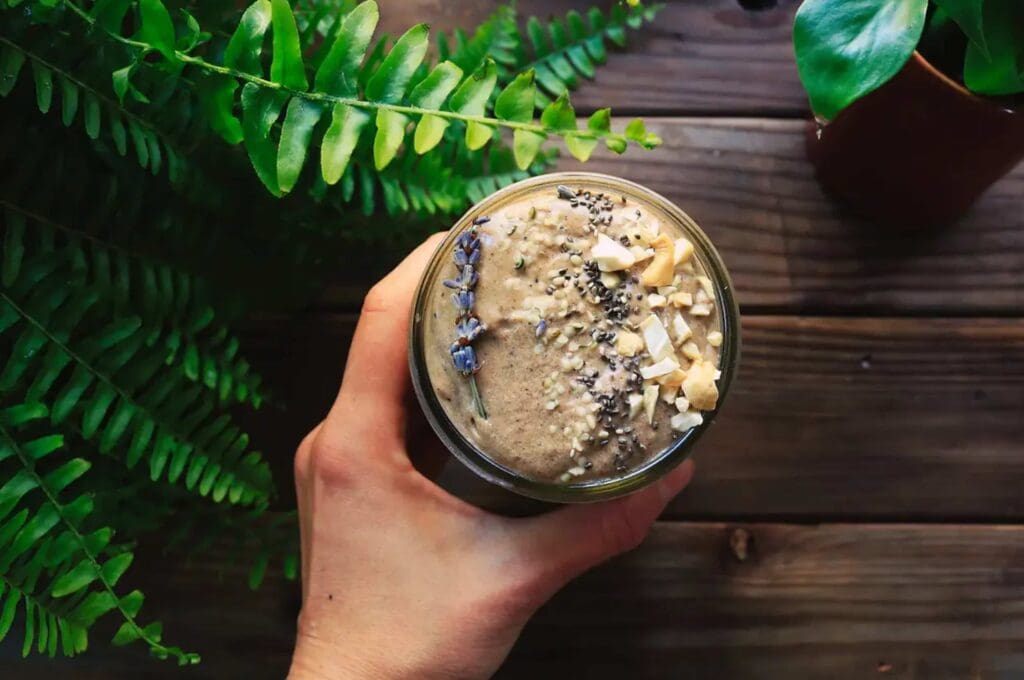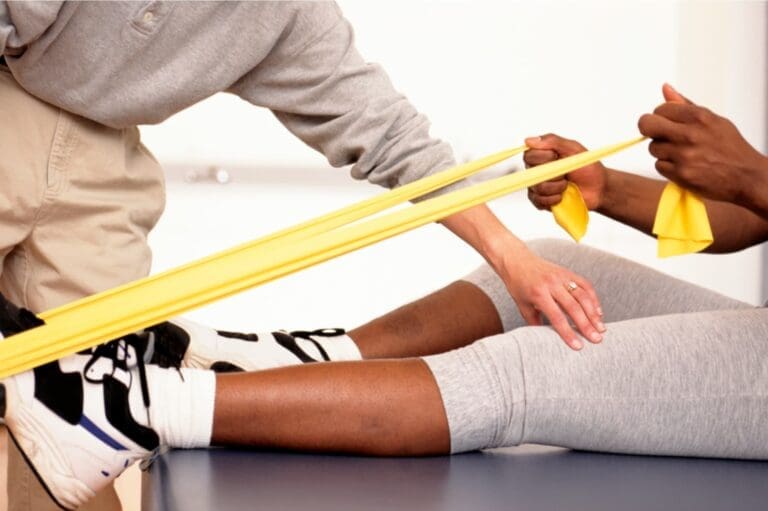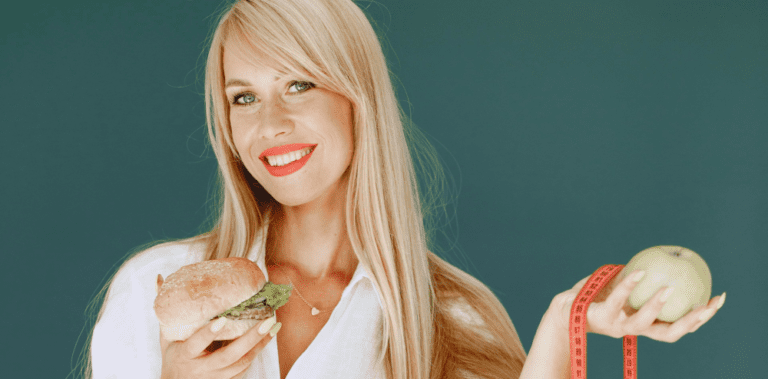
Introduction
Embarking on a new fitness regimen is an exciting step towards improving your health and achieving your fitness goals. However, exercise is only one part of the equation – strategic nutrition is essential to see results and avoid potential setbacks like burnout or injury.
As a certified personal trainer with over 17 years of experience, I have worked with many determined clients who overlooked proper nutrition in their eagerness to get started. While enthusiasm is great, a thoughtful dietary plan is essential for building sustainable habits and getting the most out of your fitness journey.
In this comprehensive beginner’s guide, I will outline key evidence-based nutrition strategies to complement your new training program. The recommendations will set you up for success by providing your body with the specific macros, calories and nutrients needed to perform at your peak, recover efficiently and transform your physique. Let’s start with the fundamentals of calculating your needs.
Calculate Your Daily Calorie Needs
Before you can plan what to eat, you need to know how many calories you should be consuming each day. As a certified personal trainer, one of the very first things I do with new clients is calculate their basal metabolic rate (BMR). Your BMR is the minimum number of calories your body needs just to complete basic functions like breathing, blood circulation, brain activity, etc.
To determine your BMR, I use the Mifflin St Jeor equation, which factors in your age, height, weight, and sex. I know, math is no fun, but trust me – figuring out your BMR is crucial! Once you know your BMR, you can calculate your total daily calorie needs based on your activity level.
Here’s a quick example:
Let’s say my new client Courtney is a 28-year-old woman who is 5’5″ and 152 lbs. Using the Mifflin St Jeor formula, her BMR is around 1360 calories per day. But Courtney is just starting a new workout regimen of strength training and HIIT classes 4-5 days per week. For her activity level, she should consume about 2100 calories per day to fuel her workouts and recovery.
I recommend using an online BMR and calorie calculator like this one, to determine your numbers. Be honest about your activity level – don’t over or underestimate it! Consuming the right amount of calories gives your body the energy it needs to get fit and feel great.

Focus on Protein, Carbs and Healthy Fats
Now that you know how many calories you need daily, let’s talk about the macros – protein, carbs, and fats. Getting the right balance of macros ensures your workouts are productive, and you recover faster, and get fitter over time.
Here’s a quick rundown of each macro and why it’s important:
Protein
Aim for 0.5-1 gram of protein per pound of body weight per day. Protein builds and repairs muscle tissue, which helps you get stronger with each workout. Great protein sources include eggs, poultry, fish, dairy, beans, lentils, tempeh, edamame, and tofu.
I tell my vegetarian and vegan clients not to stress about getting enough protein. With some planning, you can easily meet your protein needs from plant-based foods. Beans and lentils are your best friends!
Carbs
Contrary to fad diets, carbs are NOT the enemy! When eaten in the right amounts, carbs give you long-lasting energy for tough workouts. Go for nutrient-dense, high-fiber carbs like sweet potatoes, oatmeal, quinoa, brown rice, whole grain bread, and fruit. Limit added sugars.
A good baseline is aiming for 2-3 servings of whole food carbs at each meal and snack. One serving equals 1/2 cup of cooked grains, starchy veggies, beans or lentils, or 1 piece of fruit.
Healthy Fats:
Healthy fats aid hormone function, brain health, vitamin absorption, and more. Aim for 0.4-0.6 grams of fat per pound of body weight daily. My go-to’s are olive oil, avocados, nuts, seeds, coconut, fatty fish like salmon, and full-fat Greek yogurt.
I recommend tracking your macros with an app for the first few weeks to get a feel for hitting your targets. Over time, you’ll be able to eyeball macro-friendly meals and snacks.
High in Fiber
Eating a plant-based diet is a great way to get plenty of fiber in your system. Not only does fiber help support regularity, it can also help reduce cholesterol and keep you feeling fuller longer. Plus, there are so many delicious plant-based recipes out there that are packed with fiber – from hearty lentil soups to salads and smoothies. So, if you’re looking to put more fiber in your diet, a plant-based approach is definitely the way to go.
Fuel Up The Right Way Before Exercise
Let’s get into the nitty-gritty of what to eat before your new workout regimen. Pre-exercise nutrition is vital to prevent hunger pangs, sustain energy, and perform at your max during exercise.
I recommend a light carb-focused snack 30-90 minutes before workouts. My pre-workout go-to is a bagel thin with peanut butter and banana or oatmeal with blueberries and almond butter. Drink 16 ounces of water too – being hydrated is key!
If you’re hitting the gym after work, eat a carb-heavy lunch like a veggie and quinoa bowl or turkey sandwich 3-4 hours beforehand. Before evening cardio sessions, I like a small balanced meal of chicken, sweet potato, and greens 2-3 hours prior.
Some great pre-workout snacks if you’re crunched on time:
- Greek yogurt with granola and fruit
- Nut butter and apple slices
- Cottage cheese and berries
- Oatmeal energy bites or a protein bar (but check the sugar content!)
- Trail mix with nuts, seeds, and dried fruit
The goals with your pre-workout fuel are providing enough energy for your activity, avoiding GI issues, and eating early enough that digestion is well underway. Test different timings and meals to see what works best for your body!

Recover the Right Way After Exercise
What you eat after exercise is just as important as your pre-workout fuel to build fitness and get results from your regimen. Within 30 minutes post-workout, aim to consume carbs, protein, and fluids to promote muscle repair and replenish glycogen stores.
My favorite post-HIIT class snack is a recovery smoothie with yogurt, banana, peanut butter, and spinach. Other solid post-workout choices include turkey sandwiches, protein oatmeal, veggies, and hummus, or tofu stir fry.
For fluid replacement, drink 16-20 ounces of water or a hydrating sports drink that is low in sugar. Rehydrating is crucial, especially if you sweat a lot during exercise. Don’t neglect it!
Now you may be starving after an intense workout and want to gorge on a huge meal. Try to keep portions in check. Have a normal balanced meal within 1-2 hours instead. Meal prepping can be super helpful for having post-workout meals ready to go!
Meal Prep To Take Your Diet To The Next Level
As a busy trainer and mom, I understand how hard it can be to prep healthy meals every day, especially when starting a new workout routine. That’s why every Sunday, I meal prep 4-5 lunches and dinners for the upcoming week.
Meal prepping saves so much time and sets you up for nutrition success. When meals are ready to grab and go, you’re far less likely to make poor food choices because of hunger or convenience.
Here are my pro meal prep tips:
- Dedicate 1-2 hours on Sunday to food prep – put on your favorite podcast or music to make it more enjoyable!
- Prep for the week ahead based on your workout schedule. On heavy training days, prep more carb-focused meals.
- Cook 2-3 staple proteins like chicken breasts, ground turkey, or tofu that can be repurposed into different dishes.
- Roast a couple sheets of veggies – broccoli, cauliflower, Brussels sprouts, sweet potatoes, etc.
- Cook a few servings of whole grains like quinoa, brown rice, and farro.
- Assembly is key for easy meals – create bowls, salads, sandwiches, wraps and more.
- Store prepped food in individual glass containers – I like to label each with the meal and date.
- Get creative with seasonings! Curries, teriyaki, taco spices, and fresh herbs make meals tasty and exciting.
Once you get into a solid meal prep groove each week, hitting your nutrition goals becomes so much easier. You got this!
Meal prepping can take your nutrition to the next level, but I know it’s not for everyone. If you struggle to find the time or motivation to meal prep and plan nutritious foods each week, the expert nutrition team at Holly Roser Fitness is here to help. We offer customized meal planning tailored to your fitness goals and dietary preferences. Our licensed nutritionists create plans that make eating right effortless.
Or if cooking just isn’t your thing, you can use our chef services to have healthy, delicious meals conveniently delivered to your door. Proper fueling is essential for fitness success – let us handle the mealtime details so you can focus on your workouts and achieve your goals! Our easy-to-use app also lets you seamlessly track nutrients, calories, macros, and more to complement your training regimen.
My team makes achieving your nutrition goals easy and sustainable. If you don’t have time to stress about meal prep – we’ve got you covered!
Conclusion
There you have it – my top beginner nutrition tips to complement a new exercise regimen! Proper fueling and hydration allow your body to adapt and get stronger, workout after workout. I hope this guide gives you the knowledge and meal ideas to feel energized, and motivated and make fitness sustainable.
If you’re in the Bay Area and want personalized nutrition coaching to reach your goals faster, I’d love to work with you! Visit my website at www.hollyroser.com and click “Schedule a Consult” to get started.
Wishing you massive success as you begin your fitness journey! Let me know if you have any other nutrition questions.
Stay strong and healthy,
Holly Roser,
Holly Roser Fitness
The Role of a Holly Roser Fitness, a Personal Trainer in Supporting Weight Loss through a Healthy Diet
Hope you enjoyed this beginner’s nutrition guide! If you’re looking for more support on your fitness journey, I’d love to be your personal trainer. I offer private 1-on-1 training sessions and group classes at my private gym in San Mateo. My customized programs help clients reach their individual goals – whether that be weight loss, muscle gain, improved mobility, or better overall health!
If you’re ready to get real results and change your body for good, schedule a free intro session with me today. I can’t wait to work with you!
References:
Here is a list of all research studies cited in this article:
1. Westerterp, K. R. (2013). Physical activity and physical activity induced energy expenditure in humans: measurement, determinants, and effects. Frontiers in physiology, 4, 90.
2. Gonçalves, E. C., Silva, A. F., Nascimento, M. A., Trevenzoli, I. H., & Santos, J. L. (2021). Weight loss requires a proper balance between calorie intake and energy consumption. Einstein (São Paulo, Brazil), 19.
3. Phillips, S. M. (2017). Current concepts and unresolved questions in dietary protein requirements and supplements in adults. Frontiers in nutrition, 4, 13.
4. Kerksick, C. M., & Fox, E. (2010). Protein requirements for strength and high-intensity athletes. In Sports nutrition and performance enhancing supplements (pp. 377-395). Routledge.
5. Manore, M. M., Larson-Meyer, D. E., Lindsay, A. R., Hongu, N., & Houtkooper, L. (2017). Dynamic energy balance: an integrated framework for discussing diet and physical activity in obesity prevention—is it more than eating less and exercising more?. Nutrients, 9(8), 905.
6. Parr, E. B., Camera, D. M., Areta, J. L., Burke, L. M., Phillips, S. M., Hawley, J. A., & Coffey, V. G. (2020). Alcohol ingestion impairs maximal post-exercise rates of myofibrillar protein synthesis following a single bout of concurrent training. PloS one, 15(2), e0228870.
7. MacNaughton, L. S., Wardle, S. L., Witard, O. C., McGlory, C., Hamilton, D. L., Jeromson, S., … & Tipton, K. D. (2016). The response of muscle protein synthesis following whole-body resistance exercise is greater following 40 g than 20 g of ingested whey protein. Physiological reports, 4(15), e12893.
8. Pasiakos, S. M., Cao, J. J., Margolis, L. M., Sauter, E. R., Whigham, L. D., McClung, J. P., … & Young, A. J. (2013). Effects of high-protein diets on fat-free mass and muscle protein synthesis following weight loss: a randomized controlled trial. The FASEB Journal, 27(9), 3837-3847.
9. Moran-Navarro, R., Pérez-López, A., Mora-Rodríguez, R., de la Cruz-Sánchez, E., González-Badillo, J. J., Sánchez-Medina, L., & Pallarés, J. G. (2017). Time course of recovery following resistance training leading or not to failure. European journal of applied physiology, 117(12), 2387-2399.
10. Hartman, J. W., Tang, J. E., Wilkinson, S. B., Tarnopolsky, M. A., Lawrence, R. L., Fullerton, A. V., & Phillips, S. M. (2007). Consumption of fat-free fluid milk after resistance exercise promotes greater lean mass accretion than does consumption of soy or carbohydrate in young, novice, male weightlifters. The American journal of clinical nutrition, 86(2), 373-381.






